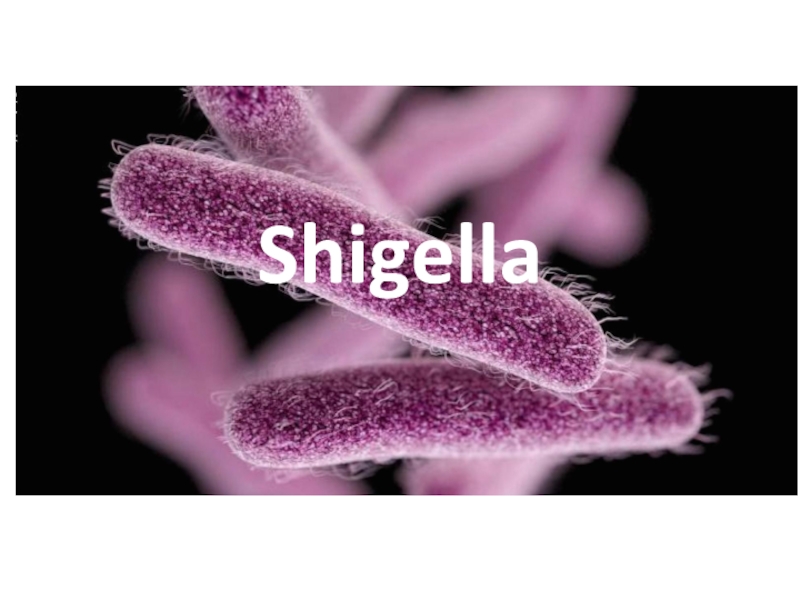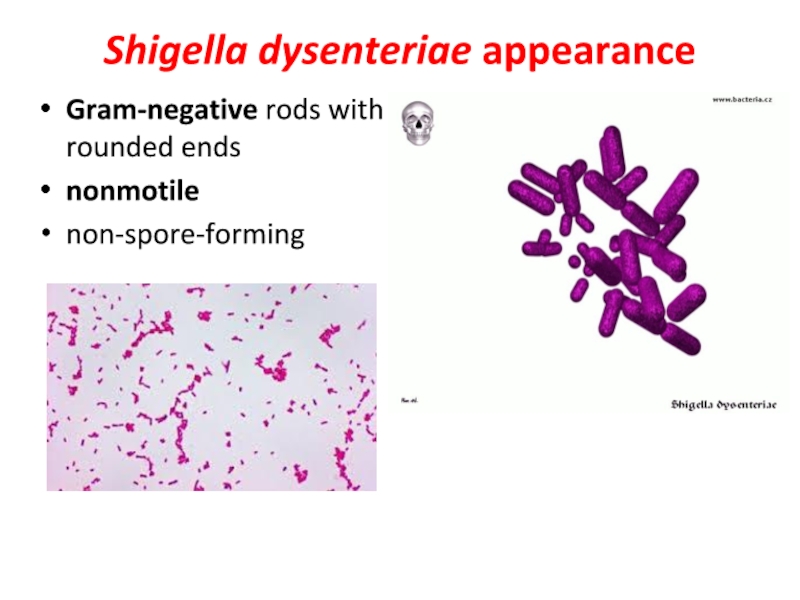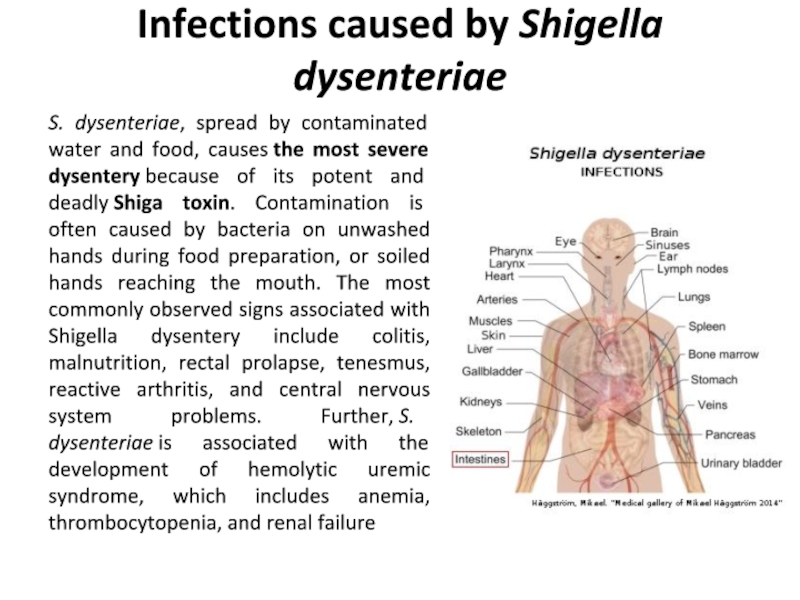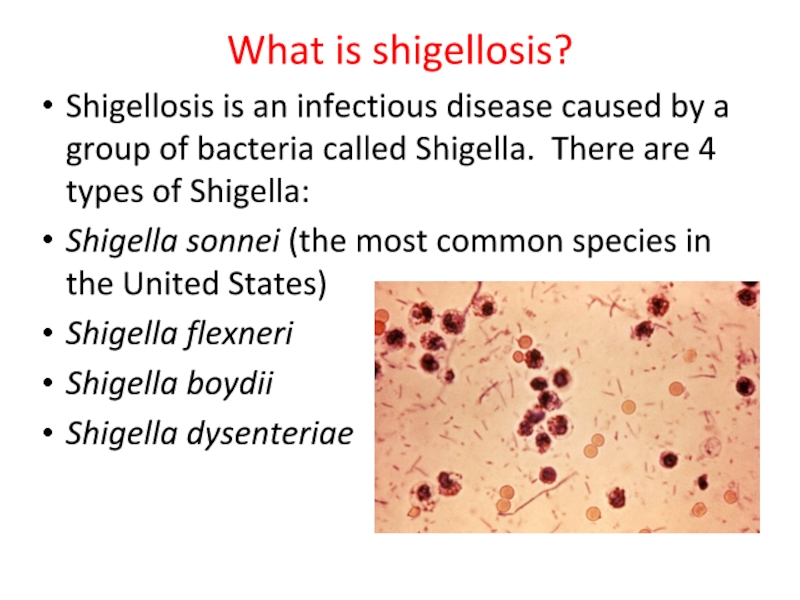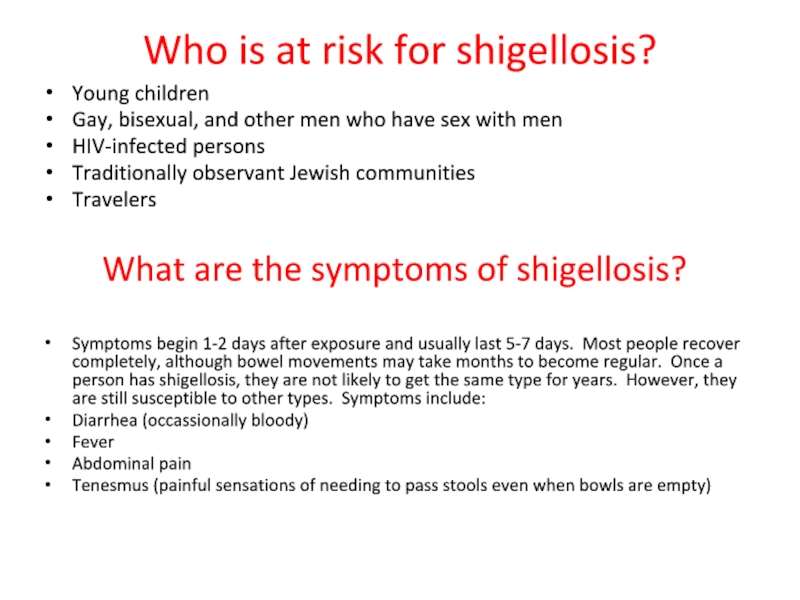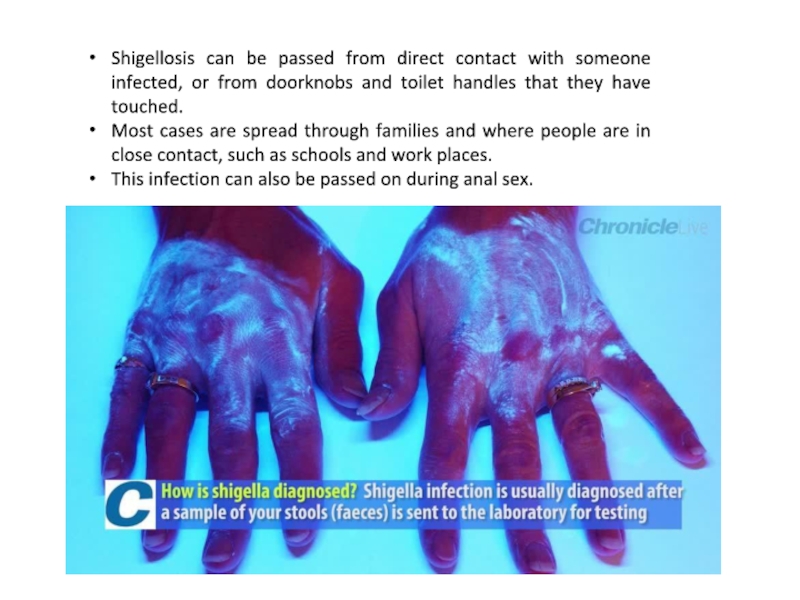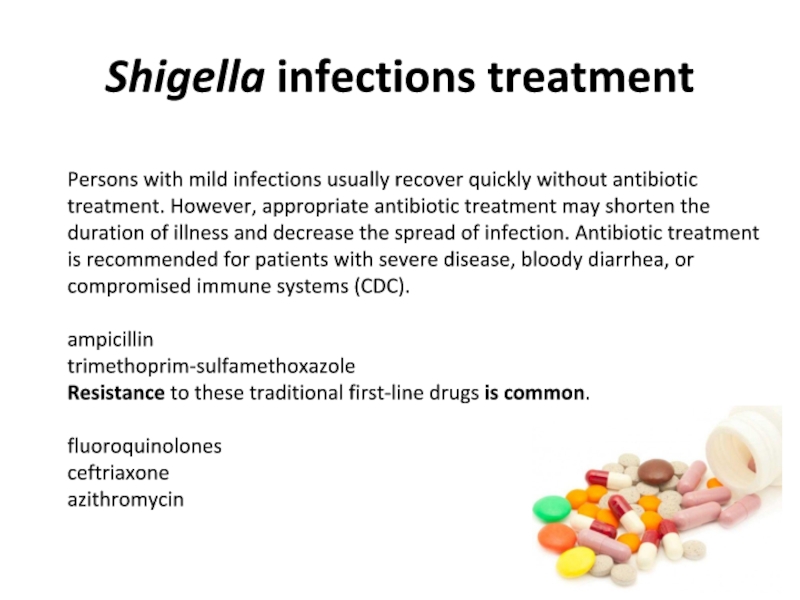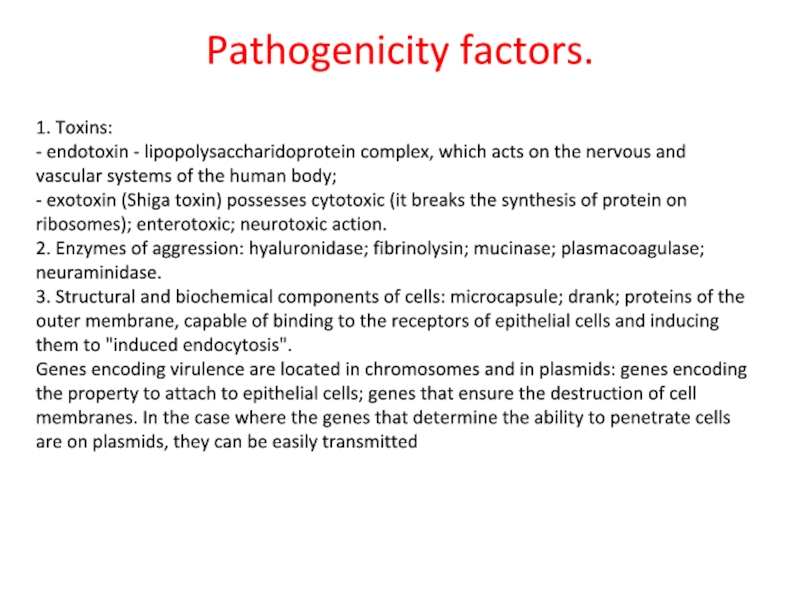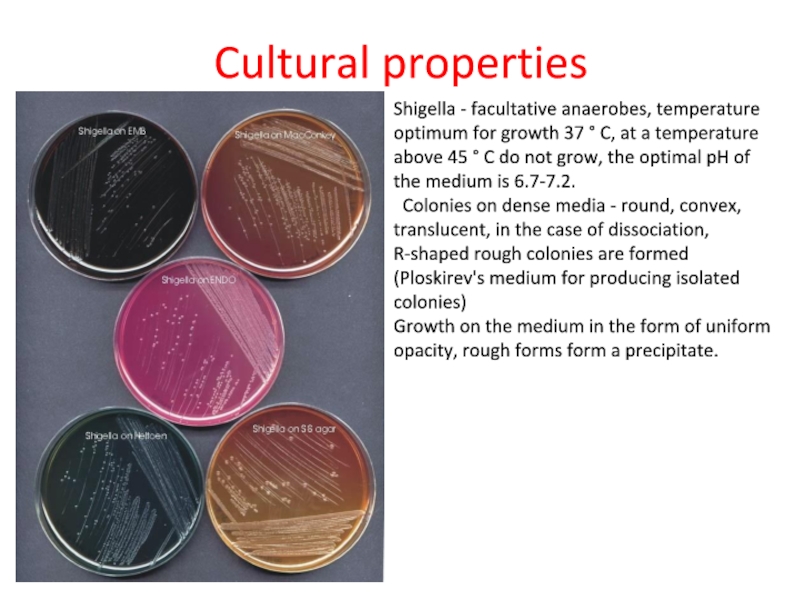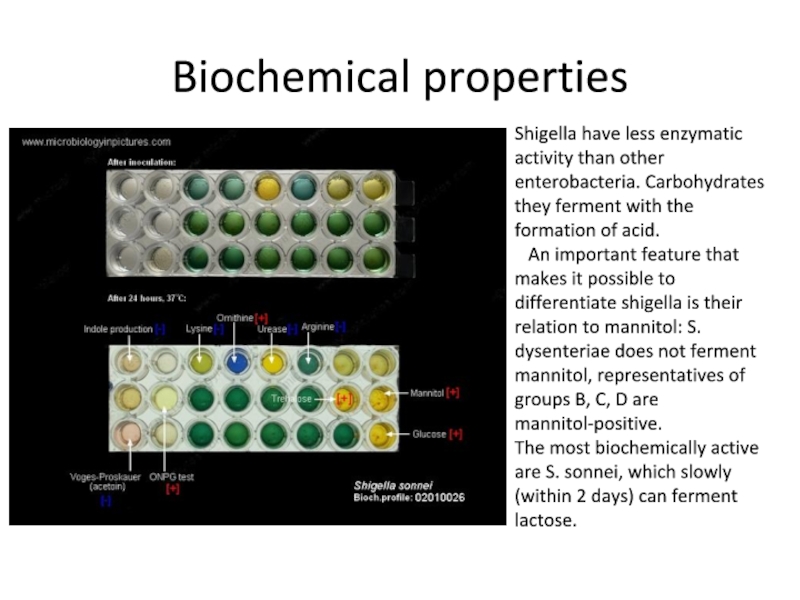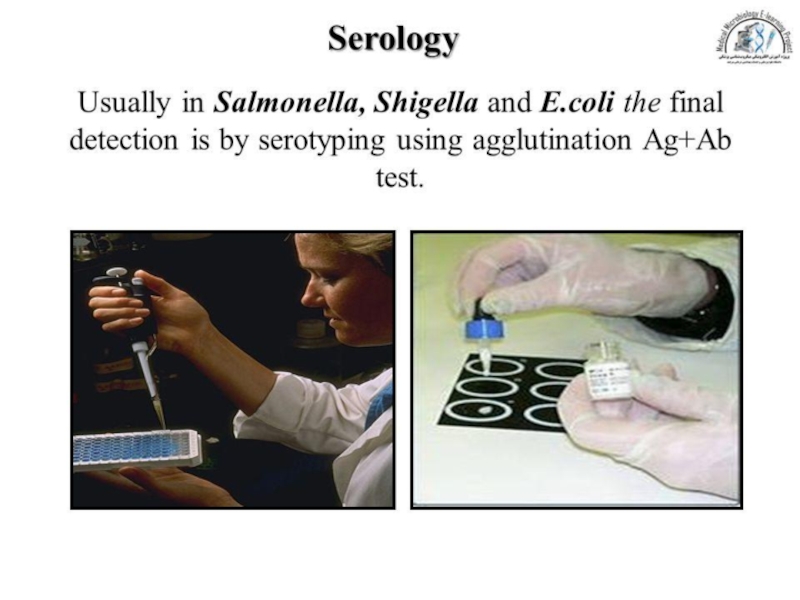- Главная
- Разное
- Дизайн
- Бизнес и предпринимательство
- Аналитика
- Образование
- Развлечения
- Красота и здоровье
- Финансы
- Государство
- Путешествия
- Спорт
- Недвижимость
- Армия
- Графика
- Культурология
- Еда и кулинария
- Лингвистика
- Английский язык
- Астрономия
- Алгебра
- Биология
- География
- Детские презентации
- Информатика
- История
- Литература
- Маркетинг
- Математика
- Медицина
- Менеджмент
- Музыка
- МХК
- Немецкий язык
- ОБЖ
- Обществознание
- Окружающий мир
- Педагогика
- Русский язык
- Технология
- Физика
- Философия
- Химия
- Шаблоны, картинки для презентаций
- Экология
- Экономика
- Юриспруденция
Shigella dysenteriae презентация
Содержание
- 1. Shigella dysenteriae
- 2. Shigella dysenteriae appearance Gram-negative rods with rounded ends nonmotile non-spore-forming
- 3. Infections caused by Shigella dysenteriae S. dysenteriae,
- 4. What is shigellosis? Shigellosis is an
- 5. Who is at risk for shigellosis?
- 6. Shigellosis can be passed from direct contact
- 7. Shigella infections treatment Persons with mild infections usually
- 8. Pathogenicity factors. 1. Toxins: - endotoxin
- 9. Cultural properties Shigella - facultative anaerobes, temperature
- 10. Biochemical properties Shigella have less enzymatic activity
- 11. Triple sugar iron agar (TSI) medium The
Слайд 2Shigella dysenteriae appearance
Gram-negative rods with rounded ends
nonmotile
non-spore-forming
Слайд 3Infections caused by Shigella dysenteriae
S. dysenteriae, spread by contaminated water and food,
Слайд 4What is shigellosis?
Shigellosis is an infectious disease caused by a group
Shigella sonnei (the most common species in the United States)
Shigella flexneri
Shigella boydii
Shigella dysenteriae
Слайд 5Who is at risk for shigellosis?
Young children
Gay, bisexual, and other men
HIV-infected persons
Traditionally observant Jewish communities
Travelers
What are the symptoms of shigellosis?
Symptoms begin 1-2 days after exposure and usually last 5-7 days. Most people recover completely, although bowel movements may take months to become regular. Once a person has shigellosis, they are not likely to get the same type for years. However, they are still susceptible to other types. Symptoms include:
Diarrhea (occassionally bloody)
Fever
Abdominal pain
Tenesmus (painful sensations of needing to pass stools even when bowls are empty)
Слайд 6Shigellosis can be passed from direct contact with someone infected, or
Most cases are spread through families and where people are in close contact, such as schools and work places.
This infection can also be passed on during anal sex.
Слайд 7Shigella infections treatment
Persons with mild infections usually recover quickly without antibiotic treatment.
trimethoprim-sulfamethoxazole
Resistance to these traditional first-line drugs is common. fluoroquinolones
ceftriaxone
azithromycin
Слайд 8Pathogenicity factors.
1. Toxins:
- endotoxin - lipopolysaccharidoprotein complex, which acts on the
- exotoxin (Shiga toxin) possesses cytotoxic (it breaks the synthesis of protein on ribosomes); enterotoxic; neurotoxic action.
2. Enzymes of aggression: hyaluronidase; fibrinolysin; mucinase; plasmacoagulase; neuraminidase.
3. Structural and biochemical components of cells: microcapsule; drank; proteins of the outer membrane, capable of binding to the receptors of epithelial cells and inducing them to "induced endocytosis".
Genes encoding virulence are located in chromosomes and in plasmids: genes encoding the property to attach to epithelial cells; genes that ensure the destruction of cell membranes. In the case where the genes that determine the ability to penetrate cells are on plasmids, they can be easily transmitted
Слайд 9Cultural properties
Shigella - facultative anaerobes, temperature optimum for growth 37 °
Colonies on dense media - round, convex, translucent, in the case of dissociation, R-shaped rough colonies are formed (Ploskirev's medium for producing isolated colonies)
Growth on the medium in the form of uniform opacity, rough forms form a precipitate.
Слайд 10Biochemical properties
Shigella have less enzymatic activity than other enterobacteria. Carbohydrates they
An important feature that makes it possible to differentiate shigella is their relation to mannitol: S. dysenteriae does not ferment mannitol, representatives of groups B, C, D are mannitol-positive.
The most biochemically active are S. sonnei, which slowly (within 2 days) can ferment lactose.
Слайд 11Triple sugar iron agar (TSI) medium
The TSI agar contains three sugars: lactose, sucrose,
Test tube 1 only contained the agar medium, hence was uninoculated. Test tube 2, contained medium that was inoculated with Shigella sp. bacteria. Test tube 3 contained medium inoculated with Providencia sp. bacteria. Test tube 4 contained medium inoculated with Pseudomonas sp. bacteria.
